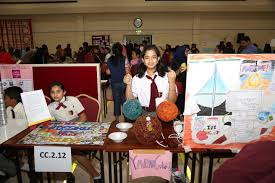Organization:Maker Day
Overview
A Maker Day is a professional development event designed to foster innovation, design thinking, and creative problem solving in its participants through involvement in hands-on projects and learning workshops (Crichton and Carter, 2014). One of the most difficult parts of being an innovator and a creator is sharing work, as well as being open with discoveries. By hosting and embracing Maker Days, educators and students alike are shown to be proud of their creativity, and taught how to present their ideas.
Purpose
The purpose of Maker day is to ignite innovation and catalyze entrepreneurship. Maker day is used to introduce participants into the Maker Movement and its four focus areas:
- Design thinking
- Design challenges
- Development of design solutions
- Group collaborations
The Maker Movement is rooted in ideas from Hans Plattners Institute of Design-d.school at Stanford University, where design thinking was born (http://vimeo.com/21568668).
Distinct Differences From Similar Workshops
In this day of innovation, students learn 7 steps of design thinking:
Define
- Decide on an issue.
- Agree on an audience.
- Prioritize this project based on urgency.
- Determine what will make this project successful.
Research
- Review the issues’ history.
- Find examples of attempts to solve similar issues.
- Note supporters, investors, and critics.
- Collaborate with end-users.
Ideation
- Determine the need and motivations of the end-user.
- Generate ideas to solve the needs.
Prototype
- Combine, refine, and expand existing ideas.
- Develop drafts.
- Test drafts with end-users.
- Present working prototypes to the client.
Choose
- Review the objective.
- Selective the strongest idea.
Implement
- Plan tasks.
- Determine resources.
- Assign tasks.
- Execute.
- Deliver.
Learn (Kelley, 2004)
- Generate feedback from the users.
- Determine if the goal has been met.
- Discuss areas for improvement.
- Collect data.
- Document.
And Dieter Rams’ Ten principles for a good design:
- Good design is innovative
- Good design makes a product useful
- Good design is aesthetic
- Good design makes a product understandable
- Good design is unobtrusive
- Good design is honest
- Good design is long lasting
- Good design is thorough to the last detail
- Good design is environmentally friendly
- Good design is a little design as possible (Vitsoe, 2013),
Along with other creative seminars and group projects.
Each Maker Day is tailored to the distinct need of its participants by the event coordinator(s) and facilitator(s), making each Maker Day an immersive and unique learning experience. Tailoring the Maker Day to the needs of participants allows the outcomes to be tied to education, and later on, to be made into a regular way of thinking in the classroom (Crichton and Carter, 2014). http://universityinnovation.org/images/a/a6/05Blossburg2.jpg Impact Achieved For Students and Campus
A Maker Day encompasses and educates participants on all aspect of design thinking (Wikipedia). It exposes its participants to ideas and fosters creative thinking that would be difficult to achieve solitarily. It also allows participants to develop a sound network with others having similar ideas. By opening the door to networking, Maker Day allows for a higher level of development. Not only do participants learn the steps to design and innovation, they also gain valuable resources and like-minded collegues to continue growth outside of the event. A Maker Day is an excellent innovation tool for any career field.
Steps Required To Bring Resource to Campus
The Innovative Learning Centre (ILC), at the University of British Colombia’s (UBC) Faculty of Education, Okanagan Campus has created a Tool Kit for individuals to host a ‘Maker Day.' This toolkit defines the steps of design thinking and highlights how they can be shown, as opposed to just being said as they would be in an ordinary lecture.
http://issuu.com/ubcedo/docs/mar27makerdaytoolkit
It is also important to note that Maker Days tend to be most successful when brought to younger innovators--in an annual Maker Day in Dubai, the younger minds made some of the most extraordinary developments, with an eighth grade student exploring hydroponics and dresses being created from recyclables. The younger we introduce and encourage creative thinking, the more ideas we will have generated.
[1]
Student Contributors
Contact Information
- UBC ILC susan.crichton@ubc.ca for more information on the Maker day Tool Kit.
- Stanford University d.school http://dschool.stanford.edu/ for more information about design thinking
References and Resources
- Crichton, S. (2014).Maker Day 2013. University of British Columbia, Canada. Date Accessed 26 February 2014 doi:http://issuu.com/ubcedo/docs/mar27makerdaytoolkit
- Kelley, D. (2004) Design Thinking. Stanford University, California USA. http://dschool.stanford.edu/
- Vitsoe Company (2013). Dieter Rams: ten principles for a good design. London, England, UK. Date Accessed 26 February 2014 doi: https://www.vitsoe.com/gb/about/good-design
- UBC Maker blog http://blogs.ubc.ca/centre/category/maker/

